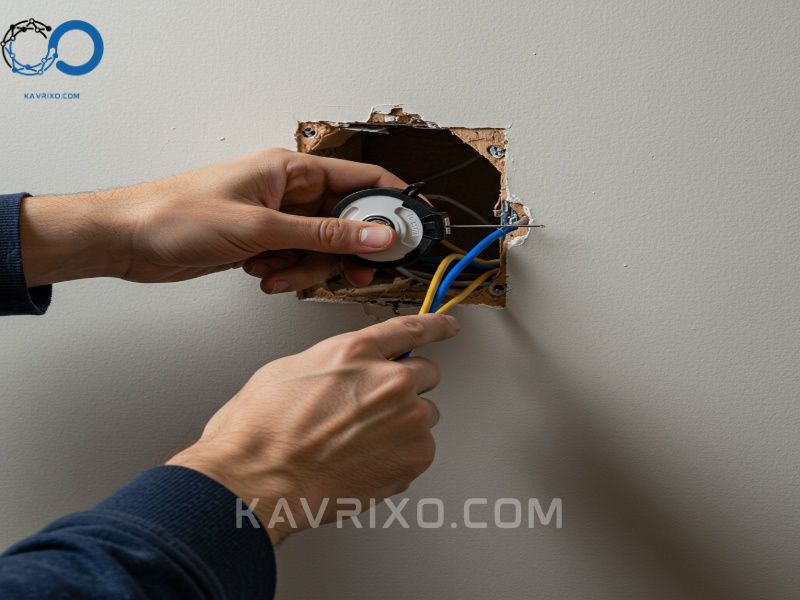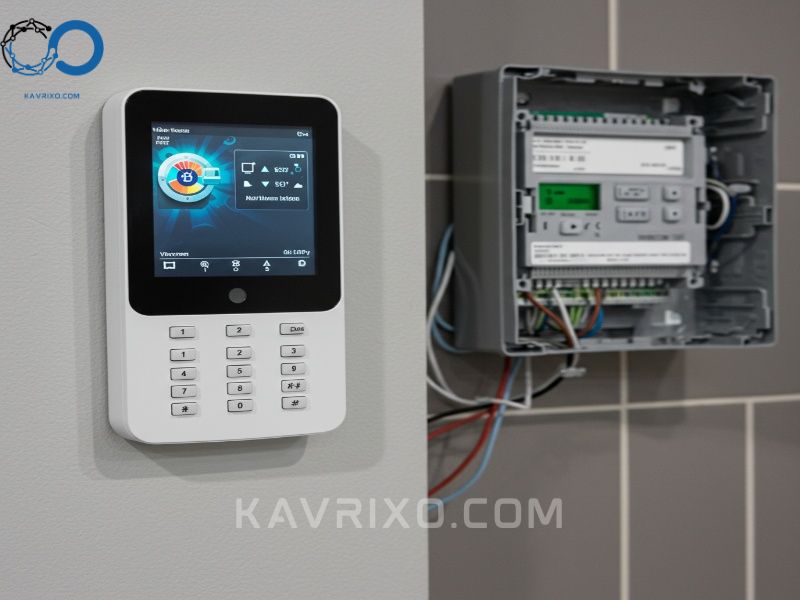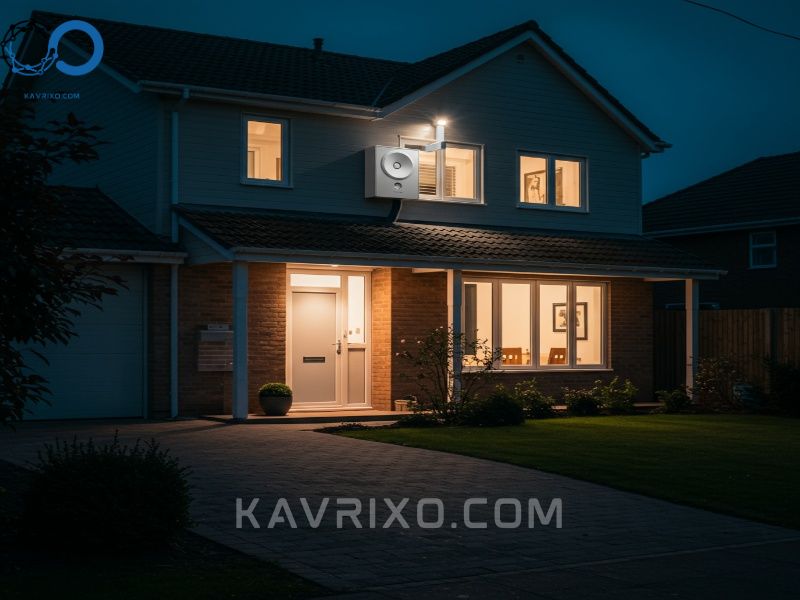In an era dominated by smart devices and wireless connectivity, it might seem counterintuitive to choose a security system that relies on physical cables. Yet, for security professionals and homeowners prioritizing absolute reliability, the wired intruder alarm remains the gold standard. While wireless systems offer convenience and quick installation, a hardwired setup provides an unparalleled level of security, resilience, and longevity that simply cannot be matched by battery-dependent alternatives.
This comprehensive guide delves into the world of hardwired security, exploring why a wired intruder alarm system is often the best wired house alarm choice, what components you need, and whether tackling the installation of diy wired burglar alarms is feasible for the dedicated homeowner.
Contents
- 1 The Enduring Superiority of Hardwired Security Solutions
- 2 Key Technological Features of the Modern Wired Intruder Alarm
- 3 Selecting the Best Wired House Alarm for Your Property
- 4 DIY Wired Burglar Alarms: Feasibility and Professional Requirements
- 5 The Long-Term Value Proposition of a Wired System
- 6 Securing Peace of Mind with a Robust Wired Intruder Alarm
The Enduring Superiority of Hardwired Security Solutions
Security is not an area where compromise is acceptable. When your family’s safety and valuable possessions are at stake, you need a system that minimizes failure points. This is precisely where the wired intruder alarm excels. By physically connecting every sensor, keypad, and siren to the central control panel, hardwired systems eliminate the primary vulnerabilities plaguing wireless options: signal interference, battery failure, and range limitations.
Addressing the Reliability Gap: Wired vs. Wireless
The fundamental difference between wired and wireless alarms boils down to communication integrity.
Wireless systems communicate via radio frequency (RF) signals. These signals can be disrupted by building materials (thick concrete walls), external electronic devices, or, most critically, deliberate jamming devices used by sophisticated intruders. If a signal is jammed or lost, the sensor is effectively useless until communication is restored.
A wired intruder alarm, conversely, uses physical low-voltage wiring (typically 4-core or 6-core cable). This connection provides a constant, dedicated, and tamper-resistant communication pathway. Unless the wire itself is physically cut—an action that immediately triggers a tamper alert on the control panel—the system remains fully operational. Furthermore, most hardwired sensors draw power directly from the control panel, meaning power loss is only a concern during a general neighborhood blackout, which modern systems mitigate using robust backup batteries integrated into the control unit.

Understanding the Core Components of a Wired System
While the cabling is the defining feature, the effectiveness of the wired intruder alarm relies on several interconnected components, all working in concert:
- The Control Panel (The Brain): This central unit manages all system functions. It processes input from sensors, controls the siren, manages user codes, and communicates status to the monitoring station (if applicable). It also houses the main power supply and the indispensable backup battery.
- Keypads and User Interfaces: These are the access points for arming and disarming the system. Modern keypads are often LCD or touchscreen displays, offering detailed zone information and system status updates.
- Sensors and Detectors: These are the eyes and ears of the system. They range from simple magnetic door contacts to sophisticated passive infrared (PIR) detectors and specialized glass break sensors.
- Siren/Sounders: These are the audible deterrents. External sounders often include strobe lights for visual identification, while internal sounders ensure immediate notification within the property.
- Wiring and Power Supply: Low-voltage wiring connects all sensors back to the control panel, providing both communication and power.
The modularity and redundancy built into the structure of a wired intruder alarm system mean that failure in one component rarely compromises the entire system, reinforcing its status as the most robust choice for securing large or complex properties.
Key Technological Features of the Modern Wired Intruder Alarm
If you think hardwired alarms are stuck in the 1980s, think again. Modern wired intruder alarm systems have fully embraced digital connectivity, marrying rock-solid cabling reliability with cutting-edge smart features. These advancements are what truly define the best wired house alarm currently available.
Sensors and Detectors: Beyond the Magnetic Contact
The versatility of hardwired systems allows for a far greater array of specialized detectors than often seen in basic wireless packages. When designing a comprehensive security plan, system designers focus heavily on layered protection:
1. Passive Infrared (PIR) and Dual-Tech Sensors
PIR detectors sense changes in infrared radiation (body heat). Modern wired PIRs are highly sophisticated, using advanced signal processing to differentiate between a human intruder and small pets (pet immunity). Dual-tech sensors increase accuracy by requiring two separate detection methods—often PIR and microwave—to be triggered simultaneously, virtually eliminating false alarms. Because these sensors are hardwired, they can draw more power, allowing for continuous, high-performance operation.
2. Perimeter Protection (Door and Window Contacts)
Standard magnetic contacts remain the foundation of perimeter security. However, hardwired systems allow for recessed contacts (hidden within the door or window frame) and heavy-duty industrial contacts for garage doors or gates. The hardwired nature of these contacts ensures they are always communicating their status to the wired intruder alarm panel.

3. Specialty Environmental Sensors
While primarily known for intrusion detection, the best hardwired house alarm panels often support integration with environmental sensors. These include:
* Smoke and Heat Detectors: Integrating fire detection into the security panel for centralized monitoring.
* Carbon Monoxide (CO) Detectors: Essential for safety, often powered and monitored by the alarm panel.
* Water/Flood Detectors: Positioned in basements or utility rooms to prevent damage from leaks.
Control Panels and Keypads: The Brain of the Best Wired House Alarm
The control panel is the heart of the system, determining its capacity, feature set, and integration capabilities. High-end wired panels are designed for scalability, supporting dozens (sometimes hundreds) of individual zones.
Zoning and Partitioning
One of the major advantages of a professional wired intruder alarm is zoning. Every sensor is assigned to a specific zone, allowing users and monitoring services to instantly identify the exact location of a breach. Furthermore, partitioning allows the user to divide the property into distinct security areas (e.g., house, garage, workshop) that can be armed and disarmed independently. This functionality is crucial for commercial properties and larger residential estates.
User Interfaces and Feedback
Modern hardwired keypads offer tactile reliability coupled with smart features. Many now include built-in Wi-Fi or Ethernet modules, bridging the gap between the rock-solid wired security infrastructure and the convenience of mobile connectivity. This allows for:
* Remote arming/disarming via a smartphone app.
* Real-time notifications and alerts.
* Integration with other smart home platforms (e.g., lighting control upon alarm activation).
Communication Pathways and Monitoring
While the sensors are wired, the communication pathway from the control panel to the outside world often utilizes hybrid technology to ensure redundancy. A truly reliable wired intruder alarm system employs multiple communication methods:
- POTS Line (Old School): Traditional telephone landlines are still used, but are increasingly unreliable due to phasing out of analogue service.
- IP/Ethernet: Utilizing the home’s existing internet connection for fast, reliable communication to the monitoring center.
- Cellular Backup (GSM/LTE): This is critical. If the internet or power is cut, the cellular module ensures the alarm signal still reaches the monitoring station, providing an essential layer of fail-safe protection. This blend of hardwired security within the perimeter and redundant external communication makes the modern hardwired system virtually impenetrable.
Selecting the Best Wired House Alarm for Your Property
Choosing the appropriate system requires careful assessment of your specific risks, the structure of your building, and your long-term security goals. Simply buying components without a strategic plan will result in gaps in protection.
Assessing Security Needs: Perimeter vs. Internal Protection
The most effective best wired house alarm systems employ a layered security approach:
- Outer Layer (Deterrence): Visible external sounders and signage deter intruders before they attempt entry.
- Perimeter Layer (First Breach Detection): This layer uses door/window contacts and perhaps exterior beam detectors. The goal is to detect the intrusion before the intruder is fully inside. Hardwired contacts are ideal here due to their permanent placement and reliability.
- Internal Layer (Verification): This layer uses internal PIRs, glass break detectors, and pressure mats to confirm the presence of an intruder once they have successfully entered the building.
For maximum security, look for systems that allow “Stay” or “Night” arming modes, enabling perimeter protection (doors and windows) to be armed while internal motion sensors in living areas remain disarmed, allowing residents to move freely.

Scalability and Future-Proofing Your Alarm Investment
One significant benefit of investing in a high-quality, professional wired intruder alarm panel is scalability. Unlike consumer-grade wireless kits that often have hard limits on the number of devices or zones, professional panels are designed to expand.
When selecting a panel, consider:
* Zone Capacity: Does the panel support enough zones for your current needs plus 25% future expansion?
* Module Support: Can the panel accept expansion modules (e.g., extra zone expanders, cellular communicators, integrated access control)?
* Component Compatibility: Professional systems usually adhere to industry standards, meaning if a sensor fails years down the line, you are not locked into a single proprietary brand for replacements. This long-term flexibility solidifies the value proposition of a hardwired system.
Integrated Smart Home Capabilities
Modern wired systems are far from isolated. The best wired house alarm systems integrate seamlessly with other home technologies. Features to look for include:
- Video Verification: Integration with hardwired security cameras (CCTV or IP cameras). When an alarm triggers, the system can automatically pull up the relevant camera feed for immediate verification by the homeowner or monitoring center.
- Automation Triggers: Using the alarm panel to trigger actions, such as automatically locking smart doors when the alarm is armed or turning on exterior floodlights upon activation.
- Remote Diagnostics: Modern panels allow security technicians to remotely run diagnostics and troubleshooting without needing a physical site visit, speeding up maintenance and reducing costs.
DIY Wired Burglar Alarms: Feasibility and Professional Requirements
The idea of installing diy wired burglar alarms is attractive because it significantly reduces labor costs. However, unlike simple plug-and-play wireless kits, installing a professional hardwired system is a complex, multi-stage process that requires specific technical skills, patience, and often, access to hidden cavities within the building structure.
Planning the Wiring Infrastructure (The Backbone of the System)
The planning stage is the most critical part of setting up diy wired burglar alarms. Before any wire is run, a detailed wiring diagram (or “pull plan”) must be created.
- Control Panel Location: The panel must be centrally located but concealed (e.g., in a utility closet, basement, or attic). It needs access to a dedicated power source and potentially the home’s network connection.
- Cable Runs: The installation requires drilling holes and “fishing” cables through walls, ceilings, and floor voids to reach every sensor location. This is highly intrusive and requires tools like specialized fish tapes and wall snakes. You must carefully calculate the length and gauge of wiring needed for each run to avoid voltage drop issues, which could affect sensor performance over long distances.
- Zone Assignment: Every cable run needs to be meticulously labeled at both ends (sensor location and control panel connection point) to ensure correct zone assignment during programming.
If the property is new construction or undergoing a major renovation, running the hardwiring is relatively straightforward. For existing properties, however, installing diy wired burglar alarms often involves significant cosmetic disruption.

Step-by-Step Overview for DIY Wired Burglar Alarms Installation
For those determined to install their own wired intruder alarm, the process generally follows these steps:
- Mount the Control Panel and Keypads: Secure the main enclosure and keypads in their designated locations.
- Run the Wiring: This is the labor-intensive part. Run a dedicated cable from the control panel location to the site of every single sensor, siren, and keypad.
- Terminate the Cables: At the sensor end, strip the wire jacket and connect the correct conductors to the sensor terminals (power, ground, and zone loop). At the control panel end, neatly terminate the wires onto the appropriate terminals.
- Install Backup Power: Connect the backup battery and ensure the main power transformer is securely wired.
- Programming: This requires understanding the panel’s manual to assign zones, set resistor values (End-of-Line Resistors, crucial for tamper protection), configure user codes, and set up communication pathways. This step often requires the most technical skill.
- Testing: Thoroughly test every sensor, every siren, and the communication backup system to ensure the wired intruder alarm functions perfectly under all conditions.
When to Call the Professionals: Complex Installations and Certifications
While installing basic diy wired burglar alarms is possible, there are several situations where professional installation is mandatory or highly advisable:
- Insurance Requirements: Many home insurance policies require that security systems, particularly those eligible for premium discounts, be installed and maintained by a certified professional security company.
- High-End Systems: Complex installations involving hundreds of zones, multiple partitions, or integration with high-end access control systems are best left to licensed technicians who understand advanced programming and fault isolation.
- Monitoring Services: If you plan on using a central station monitoring service, they often require that the system be installed and commissioned by an authorized dealer to ensure compliance with communication standards and alarm verification protocols.
Professional installers not only handle the arduous wiring process efficiently but also guarantee that the system is correctly programmed with the necessary tamper-proofing (such as EOL resistors), ensuring that your wired intruder alarm operates at maximum effectiveness.
The Long-Term Value Proposition of a Wired System
The initial investment (both time and money) in a wired intruder alarm system is generally higher than that of a wireless system. However, this upfront cost is offset by significant long-term benefits that affect both maintenance and property value.
Minimal Maintenance and Low Operating Costs
Once installed, hardwired systems are incredibly cheap to run. Since sensors draw power from the main panel, there are no batteries to replace every 1-3 years—a recurring, often expensive, task associated with large wireless setups. The only battery requiring periodic replacement is the panel’s backup battery, typically every 5–7 years, depending on usage. This drastically reduced maintenance burden makes the wired intruder alarm the most cost-effective solution over a 10-to-20-year lifespan.
Enhanced Property Value and Credibility
A professionally installed best wired house alarm is viewed by many buyers as a significant asset. It signals a permanent, high-quality security infrastructure that doesn’t rely on transient technology. Unlike wireless components that may become obsolete or incompatible with future standards, the wiring infrastructure itself is future-proof. Upgrading a wired system usually only requires replacing the control panel and keypads, while the extensive and difficult-to-install wiring remains intact.

Securing Peace of Mind with a Robust Wired Intruder Alarm
In the final analysis, the choice between wired and wireless security comes down to a fundamental trade-off: convenience versus resilience. While wireless systems offer an easy entry point to home security, the wired intruder alarm offers definitive, unyielding protection.
For homeowners seeking the best wired house alarm—one that is resistant to jamming, immune to battery failures, highly scalable, and capable of integrating advanced features—the hardwired approach is non-negotiable. Whether you opt to tackle diy wired burglar alarms installation yourself (recognizing the complexity) or engage a professional, investing in a hardwired infrastructure is investing in genuine, long-term peace of mind.
By prioritizing reliability and resilience, you ensure that when a critical event occurs, your security system performs exactly as intended, delivering timely alerts and providing the unwavering protection your home deserves.

